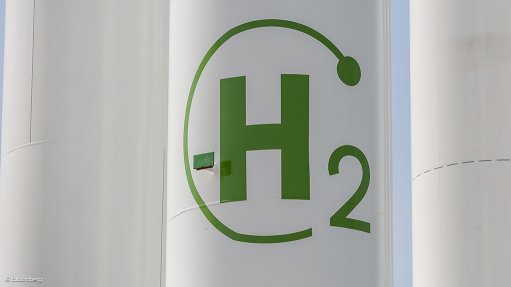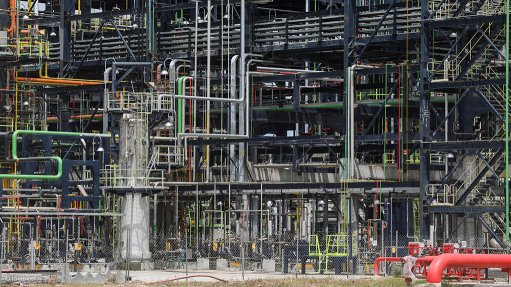Green building improvements needed to meet Paris agreement
The energy intensity per square metre of buildings needs to improve by 30% by 2030 to keep the Paris Agreement on track, the Global Alliance for Buildings and Construction’s ‘Global Status Report 2017’ has revealed.
The report, released on Monday, found that total floor area reached an estimated 235-billion square metres in 2016. This figure is set to almost double over the next 40 years, with 230-billion square metres of additional buildings set to be built – the equivalent of adding the floor area of Japan to the planet every single year to 2060.
Buildings and construction account for 39% of energy-related carbon dioxide (CO2) emissions, when upstream power generation is included.
Between 2010 and 2016, population growth, rising floor area per person and greater demand for energy services contributed to an increase in new energy demand in buildings equivalent to all the final energy consumed by Germany during the same period.
According to the report, the clock is ticking, in part, because more than half of construction expected to 2060 will take place in the next 20 years – two-thirds of it in countries that do not have mandatory building energy codes in place.
However, the report – prepared by the International Energy Agency (IEA) and coordinated by United Nations (UN) Environment – highlights many opportunities to deploy energy-efficient and low-carbon solutions, and points to many examples across the globe that show that goals can be met with clear and concerted efforts.
“Over the next 40 years, the world is expected to add the equivalent floor area of Paris to the planet every single week,” said IEA executive director Fatih Birol at the international conference themed ‘Energy efficiency in buildings: how to accelerate investments’ on the sidelines of the One Planet Summit, in Paris. “This rapid growth is not without consequences.”
“While the energy intensity of the building sector has improved, this has not been enough to offset rising energy demand. Ambitious action is needed without delay to avoid locking in long-lived, inefficient building assets for decades to come,” Birol said.
The Paris Agreement pledges, to date, still fall short of hitting the 4.9 Gt of CO2/y in emissions reduction that could be achieved if countries were to pursue strategic low-carbon and energy-efficient buildings technology deployment. CO2 emissions from buildings and construction rose by nearly 1% every year between 2010 and 2016, releasing 76 Gt of CO2 in cumulative emissions.
The 30% improvement in the sector’s energy intensity would require a near-doubling of current buildings’ energy performance improvements to more than 2% each year to 2030, the report says. This means near-zero energy, zero-emissions buildings need to become the construction standard globally within the next decade.
The rate of building energy renovations also needs to improve from 1% to 2% a year to over 2% to 3% in the coming decade. Such retrofits are particularly important in Organisation for Economic Cooperation and Development countries, where roughly 65% of the total expected 2060 buildings stock is already built today.
“Similar to many areas linked to the Paris Agreement, the building sector is seeing some progress in cutting its emissions, but it is too little, too slowly. Realising the potential savings of the buildings and construction sector requires an all-hands-on-deck approach – in particular to address rapid growth in inefficient and carbon-intensive building investments,” UN Environment head Erik Solheim said.
The energy savings potential from improved building envelope performance improvements has been huge. Globally, high-performance buildings construction and deep energy renovations of existing building envelopes represent a savings potential more than all the final energy consumed by the Group of 20 countries in 2015.
Green Building Councils Africa Regional Network chair Thulani Kuzwayo noted that these findings were particularly pertinent for Africa.
“Not only is Africa one of the continents most acutely feeling the effects of climate change today, by 2050, Africa will be home to an estimated 1.3-billion more people.
“That’s more than half of the world’s projected population growth of 2.4-billion people – with 80% of buildings that will exist in 2050 yet to be built. This presents an opportunity to build right from today, and create green jobs, skills and training, and sustainable growth through widespread green building.”
Comments
Press Office
Announcements
What's On
Subscribe to improve your user experience...
Option 1 (equivalent of R125 a month):
Receive a weekly copy of Creamer Media's Engineering News & Mining Weekly magazine
(print copy for those in South Africa and e-magazine for those outside of South Africa)
Receive daily email newsletters
Access to full search results
Access archive of magazine back copies
Access to Projects in Progress
Access to ONE Research Report of your choice in PDF format
Option 2 (equivalent of R375 a month):
All benefits from Option 1
PLUS
Access to Creamer Media's Research Channel Africa for ALL Research Reports, in PDF format, on various industrial and mining sectors
including Electricity; Water; Energy Transition; Hydrogen; Roads, Rail and Ports; Coal; Gold; Platinum; Battery Metals; etc.
Already a subscriber?
Forgotten your password?
Receive weekly copy of Creamer Media's Engineering News & Mining Weekly magazine (print copy for those in South Africa and e-magazine for those outside of South Africa)
➕
Recieve daily email newsletters
➕
Access to full search results
➕
Access archive of magazine back copies
➕
Access to Projects in Progress
➕
Access to ONE Research Report of your choice in PDF format
RESEARCH CHANNEL AFRICA
R4500 (equivalent of R375 a month)
SUBSCRIBEAll benefits from Option 1
➕
Access to Creamer Media's Research Channel Africa for ALL Research Reports on various industrial and mining sectors, in PDF format, including on:
Electricity
➕
Water
➕
Energy Transition
➕
Hydrogen
➕
Roads, Rail and Ports
➕
Coal
➕
Gold
➕
Platinum
➕
Battery Metals
➕
etc.
Receive all benefits from Option 1 or Option 2 delivered to numerous people at your company
➕
Multiple User names and Passwords for simultaneous log-ins
➕
Intranet integration access to all in your organisation


















